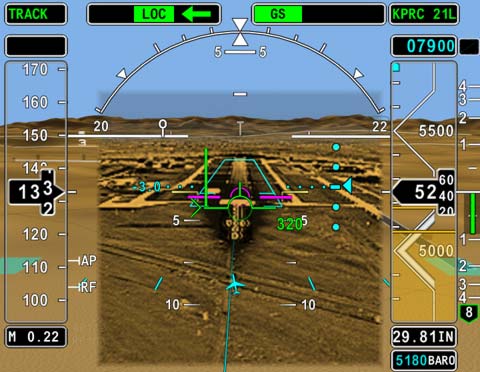
Honeywell has announced that it is in the development phase of a program to give its primary flight displays (PFDs) a “picture-in-picture” view of the environment ahead. This initiative began with Honeywell’s SmartView synthetic vision technology, which was certified in 2007. SmartView uses a huge, worldwide GPS terrain, airport, runway, and obstacle database to generate a three-dimensional view of the nearby geography on the PFD.
To this, Honeywell has added forward-looking infrared (FLIR) technology. A nose-mounted Kollsman infrared camera feeds imagery to the cockpit, where it’s superimposed on the PFD. At altitude, the infrared imagery is centered within the PFD view, on the area surrounding the flight-path and flight-director symbology. As the airplane descends to the runway, the infrared imagery expands to nearly the full PFD dimensions. The airspeed and altitude vertical tapes are still in view, however, as are informational cues. Infrared (IR) technology like this can “see” in nighttime, is able to observe clouds and cloud layers at night, and can, under some conditions, penetrate fog and see through precipitation.
Unlike other infrared displays that use black and white renditions, Honeywell has boosted the texture and realism of the integrated IR view by colorizing the terrain. The result is real-time awareness of the airport environment, including other aircraft, vehicles, and wildlife. Moreover, the IR superimposition validates the synthetic-terrain view.
Honeywell’s ultimate goal is to earn certification credit for flying its SVS/integrated IR system to lower landing and takeoff minima.

